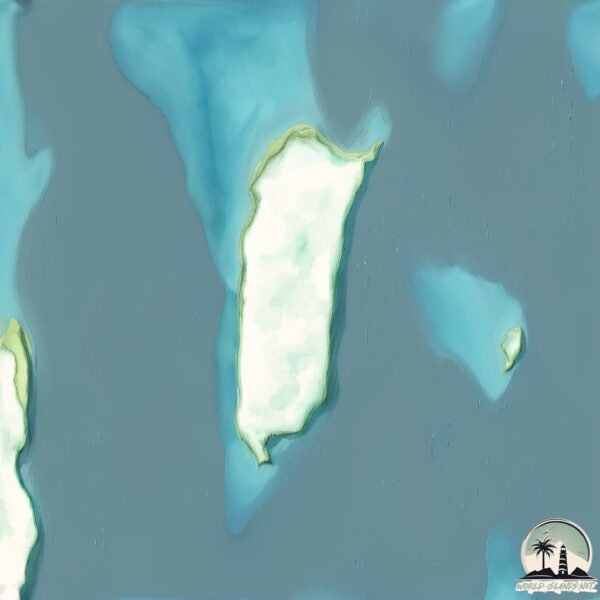Welcome to Mukawwar , a Dry island in the Red Sea, part of the majestic Indian Ocean. This guide offers a comprehensive overview of what makes Mukawwar unique – from its geography and climate to its population, infrastructure, and beyond. Dive into the details:
Geography and size of Mukawwar
Size: 30.6 km²Coastline: 30.4 kmOcean: Indian OceanSea: Red SeaContinent: Africa
Mukawwar is a Medium Island spanning 31 km² with a coastline of 30 km.
Archipel: –
Tectonic Plate: India – A major tectonic plate that initially moved northward at a rapid pace before colliding with the Eurasian Plate. This collision is responsible for the uplift of the Himalayas and the Tibetan Plateau.
The geographic heart of the island is pinpointed at these coordinates:
Climate and weather of Mukawwar
Climate Zone: DryClimate Details: Hot Deserts ClimateTemperature: Hot
Climate Characteristics: Dominated by extremely hot temperatures, this climate is marked by minimal rainfall and barren landscapes. Nights often experience drastic temperature drops.
Topography and nature of Mukawwar
Timezone: UTC+03:00Timezone places: Asia/RiyadhMax. Elevation: 70 m Mean Elevation: 25 mVegetation: Sparse VegetationTree Coverage: 22%
The mean elevation is 25 m. The highest elevation on the island reaches approximately 70 meters above sea level. The island is characterized by Plains: Flat, low-lying lands characterized by a maximum elevation of up to 200 meters. On islands, plains are typically coastal lowlands or central flat areas.
Dominating Vegetation: Sparse Vegetation
Vegetation: 6 vegetation zones – Very Highly Diverse Island
Infrastructure and Travelling to Mukawwar
Does the island have a public airport? no .
Does the island have a major port? no .
The mean population of Mukawwar is 3 per km². Mukawwar is Gently Populated. The island belongs to Sudan .
Continuing your journey, Al Hasani is the next notable island, situated merely km away.
Sanganeb Marine National Park and Dungonab Bay – Mukkawar Island Marine National Park
Sanganeb Marine National Park and Dungonab Bay – Mukkawar Island Marine National Park. The property consists of two ...
Sanganeb Marine National Park and Dungonab Bay – Mukkawar Island Marine National Park
Sanganeb Marine National Park and Dungonab Bay – Mukkawar Island ...
Sanganeb Marine National Park and Dungonab Bay – Mukkawar Island Marine National Park. The property consists of two ...
Exploring Sudan's Marine Wonders: Sanganeb and Dungonab Bay
Dive into the breathtaking beauty of Sudan's hidden marine treasures ...
Dive into the breathtaking beauty of Sudan's hidden marine treasures in "Exploring Sudan's Marine Wonders: Sanganeb and ...
Why Cannot Planes Fly Over Kaaba?
This video will unveil the facts and the conspiracies surrounding the ...
This video will unveil the facts and the conspiracies surrounding the Mystery of why Aeroplanes cannot fly over Kaaba. #Kaaba ...
Sudan is classified as Developing region: Regions characterized by lower income levels, with economies in the process of industrialization and modernization. The level of income is Lower middle income.
News – Latest Updates and Headlines from Mukawwar
Stay informed with the most recent news and important headlines from Mukawwar. Here’s a roundup of the latest developments.
Loading...
Please note: The data used here has been primarily extracted from satellite readings. Deviations from exact values may occur, particularly regarding the height of elevations and population density. Land area and coastline measurements refer to average values at mean high tide.

